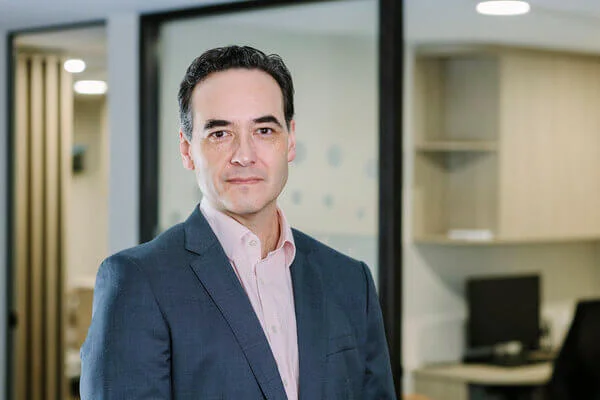When it comes to achieving a more sculpted and toned midsection, two popular options often come to mind: liposuction and tummy tuck. These cosmetic procedures aim to help people enhance their body contours and achieve their desired aesthetic goals. However, understanding the key differences between liposuction and tummy tuck is essential for making an informed decision about which procedure is right for you.
This article explores what is involved in liposuction and tummy tuck surgery, and details the similarities and differences between the two. For personalised advice or to find out more about tummy tucks and liposuction in Melbourne, contact our team at Dean White today.
For anyone living in Victoria, consulting a leading plastic surgeon in Melbourne like A/Prof Dean White can provide invaluable insights tailored to your unique needs.
Liposuction vs. Tummy Tuck
Liposuction and tummy tuck, also known as abdominoplasty, are both surgical interventions aimed at improving the appearance of the abdominal area. While they share a common goal of enhancing body contours, they address distinct concerns and utilise different techniques.
All About Liposuction
Liposuction is a surgical procedure designed to remove excess fat deposits from specific areas of the body. It is commonly performed on the abdomen, hips, thighs, buttocks, arms, and neck, though it can also be performed on other areas of the body, including the face. The procedure involves the use of a suction technique to target and extract fat cells, resulting in improved body contours and a more sculpted appearance.
Who Is an Ideal Candidate for Liposuction?
Liposuction is best suited for people who have localised areas of stubborn fat that are resistant to diet and exercise. This may be the stomach for some people, whereas for others it may be the flanks (‘love handles’), thighs, or elsewhere. Ideal candidates are generally in good overall health, have good skin elasticity, and are able to maintain a stable body weight. With that in mind, it’s important to note that liposuction is not a weight loss procedure, but rather a body contouring technique.
What Areas of the Body Can Liposuction Be Performed On?
Liposuction is a versatile procedure that aims to target and address fat deposits in various areas of the body. Some of the common areas treated with liposuction include:
- Abdomen: Liposuction aims to remove excess fat from the abdominal region, helping to create a flatter and more defined stomach.
- Flanks: The flanks, or love handles, are well-known for storing stubborn fat. Liposuction aims to precisely target and remove these fatty deposits, enhancing the waistline and improving overall body proportions.
- Thighs: Liposuction may reduce fat accumulation in the inner and outer thighs, resulting in slimmer thighs and improved leg contours.
- Buttocks: In cases where there is excess fat in the buttocks, liposuction aims to selectively remove fat to achieve a more sculpted and lifted appearance.
- Upper Arms: Liposuction may address the accumulation of fat in the upper arms. By removing excess fat, liposuction may help create a more toned and streamlined arm contour.
- Neck and Chin: Liposuction can also be used to reduce the appearance of a double chin or excess fat in the neck area. This aims to result in a more defined jawline and improved profile.
What Is the Procedure for Liposuction?
Liposuction techniques have evolved over time, and various methods are now available. Traditional liposuction involves making small incisions in the target area, inserting a thin tube called a cannula, and manually breaking up and suctioning out the fat. Other advanced techniques, such as ultrasound-assisted liposuction (UAL) and laser-assisted liposuction (LAL), use energy-based devices to assist in fat removal.
What Can I Expect After Liposuction?
After liposuction, people may experience some bruising, swelling, and discomfort in the treated areas. Compression garments are typically worn to aid in the healing process and help minimise swelling. Most people can resume light activities within a few days and return to normal routines within a few weeks, though this will depend on a variety of factors that your doctor will discuss with you during your consultation. The final results of liposuction become more apparent as swelling subsides, generally within a few months, revealing a slimmer and more contoured silhouette.
What Are the Potential Risks and Complications Associated With Liposuction?
As with any surgical procedure, liposuction carries some risks. These may include infection, bleeding, adverse reactions to anaesthesia, asymmetry, contour irregularities, or changes in skin sensation. To minimise the chances of these or other risks occurring, ensure you choose a skilled and experienced plastic surgeon and follow their post-operative care instructions.
All About Tummy Tuck Surgery
A tummy tuck, also known as abdominoplasty, is a surgical procedure aimed at improving the appearance of the abdomen by removing excess skin and fat and tightening the underlying muscles. Unlike liposuction, which primarily focuses on fat removal, a tummy tuck aims to address multiple concerns including loose or sagging skin and weakened abdominal muscles.
Who Is an Ideal Candidate for a Tummy Tuck?
Tummy tucks are typically suitable for people who have experienced significant weight loss, pregnancy or have loose skin and muscle separation in the abdominal area due to ageing or genetics. Ideal candidates are in good overall health, at a stable weight, and have realistic expectations about the outcomes of the procedure. Your surgeon will discuss these with you to make sure your expectations align with the expected result.
What Concerns Might a Tummy Tuck Address?
Tummy tucks aim to address specific concerns that may not be fully resolved through liposuction alone. These include:
- Excess Skin: Tummy tucks aim to remove excess skin that may result from significant weight loss, pregnancy, or natural ageing. This aims to help improve the overall contour and tightness of the abdomen.
- Muscle Separation (Diastasis Recti): A tummy tuck involves repairing and tightening the abdominal muscles, which may become stretched or separated, especially after pregnancy. This not only provides a flatter appearance but may also improve core strength and stability.
- Stretch Marks: In some cases, tummy tuck surgery may also involve the removal of stretch marks located on the lower abdomen. However, it is important to note that not all stretch marks can be eliminated, and the extent of their removal depends on their location and severity.
What Is the Procedure for a Tummy Tuck?
The tummy tuck procedure typically involves making an incision across the lower abdomen, just above the pubic area. The length and shape of the incision may vary depending on the extent of correction needed. Through this incision, your plastic surgeon will remove excess skin and fat, repair and tighten the abdominal muscles, and reposition the remaining skin to create a more taut and contoured appearance. Liposuction may also be used in combination with tummy tuck surgery to further refine the waistline and enhance the overall results.
What Can I Expect After a Tummy Tuck?
The recovery period following a tummy tuck procedure may take several weeks. People may experience swelling, bruising, and discomfort in the treated area. It is important to follow the post-operative instructions provided by your surgeon, which may include wearing a compression garment, avoiding strenuous activities, and maintaining a healthy lifestyle. Over time, as the body heals, the final results of a tummy tuck become more apparent, revealing a flatter, firmer, and more toned abdominal contour.
What Are the Potential Risks and Complications Associated With Tummy Tuck Surgery?
Like any surgical procedure, tummy tuck carries certain risks. These may include infection, bleeding, adverse reactions to anaesthesia, scarring, asymmetry, or changes in skin sensation. It’s crucial to choose a skilled and experienced plastic surgeon and ensure you thoroughly discuss the potential risks and complications associated with the procedure.
The Key Differences Between Liposuction and Tummy Tuck Surgery
If you’re considering liposuction or a tummy tuck, it’s important to consult with a qualified plastic surgeon to assess your specific concerns. They will talk with you to evaluate your overall health and determine the most suitable procedure for achieving your desired results. They will also be able to guide you through the decision-making process and develop a personalised treatment plan tailored to your unique needs.
Fat Reduction
Liposuction focuses on removing excess fat deposits from specific areas of the body. It is an effective method for contouring and sculpting body contours by targeting localised fat pockets. However, liposuction does not address concerns related to excess skin or muscle separation, while a tummy tuck may.
Excess Skin and Muscle Tightening
A tummy tuck is a comprehensive procedure that may address multiple concerns. It involves the removal of excess skin, tightening of the abdominal muscles, and in some cases, the elimination of stretch marks. Tummy tucks are particularly beneficial for people with loose or sagging skin, weakened abdominal muscles (diastasis recti), or significant skin laxity.
Complementary Nature
While liposuction and tummy tucks are distinct procedures, they may also be complementary to each other. In some cases, a combination of liposuction and a tummy tuck may be recommended in an effort to achieve optimal results. Liposuction may be performed alongside tummy tuck surgery to remove excess fat in surrounding areas and further enhance body contours.
Body Areas Targeted
Liposuction may be performed on various areas of the body, such as the abdomen, flanks, thighs, buttocks, arms, and neck. Its main focus is on fat reduction and body contouring. On the other hand, tummy tuck surgery specifically targets the abdominal area, aiming to address concerns related to excess skin, muscle separation, and weakened abdominal muscles.
Interested in Tummy Tuck Surgery or Liposuction in Melbourne?
It’s important to consider your goals and expectations when deciding between liposuction and tummy tuck surgery, or considering a combination of both. As there are many factors to consider, it’s recommended that you consult with an experienced plastic surgeon to discuss your options.
Associate Professor Dean White is highly knowledgeable and experienced in performing both tummy tuck surgery and liposuction in Melbourne. When your goal is to work with one of the best names in the industry, you can trust you’re in capable hands with Dean White. To get started on your journey, book an appointment today.






